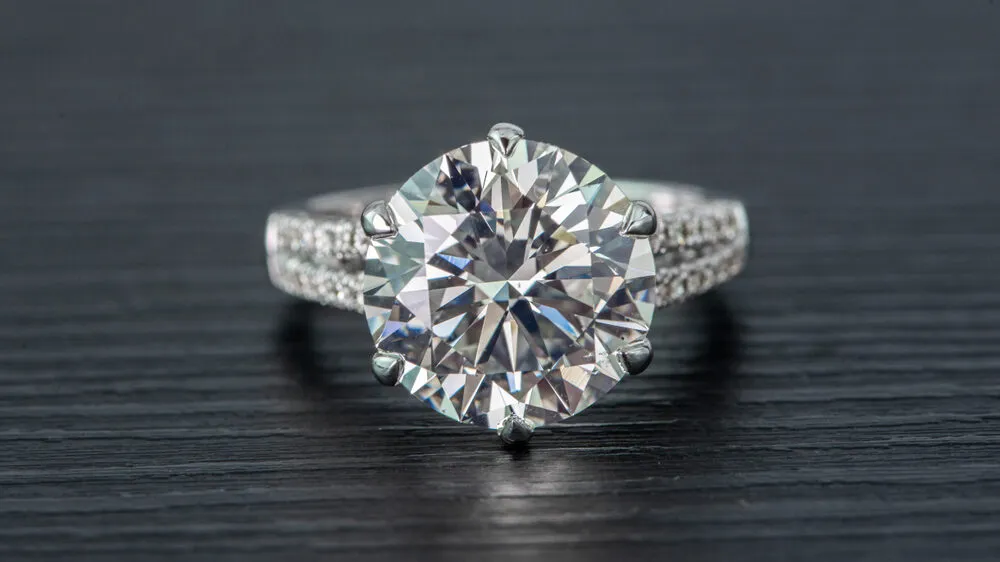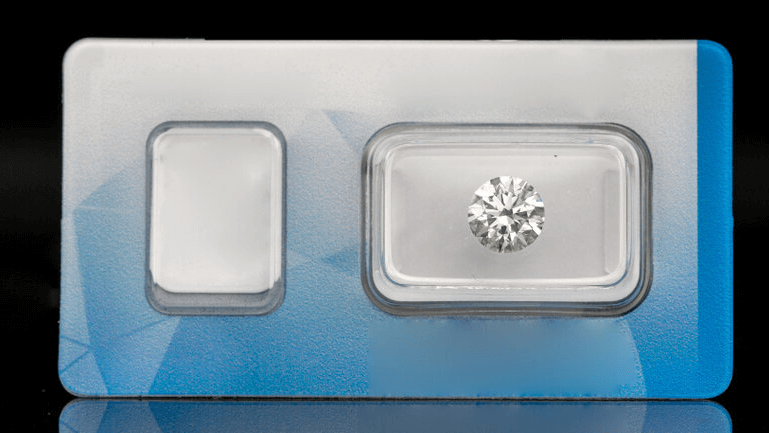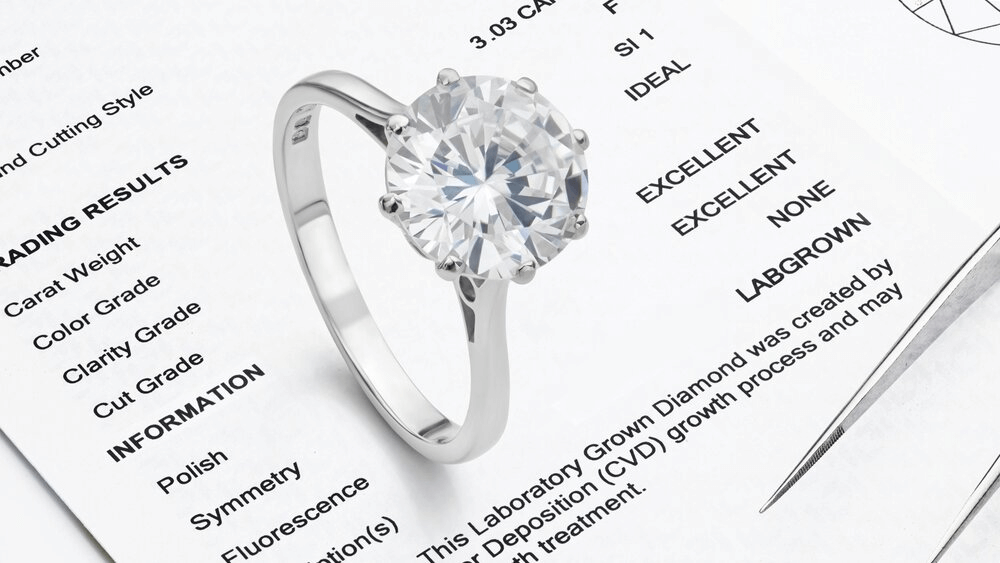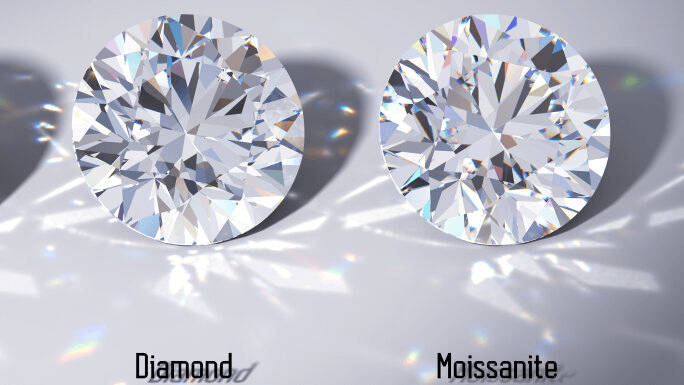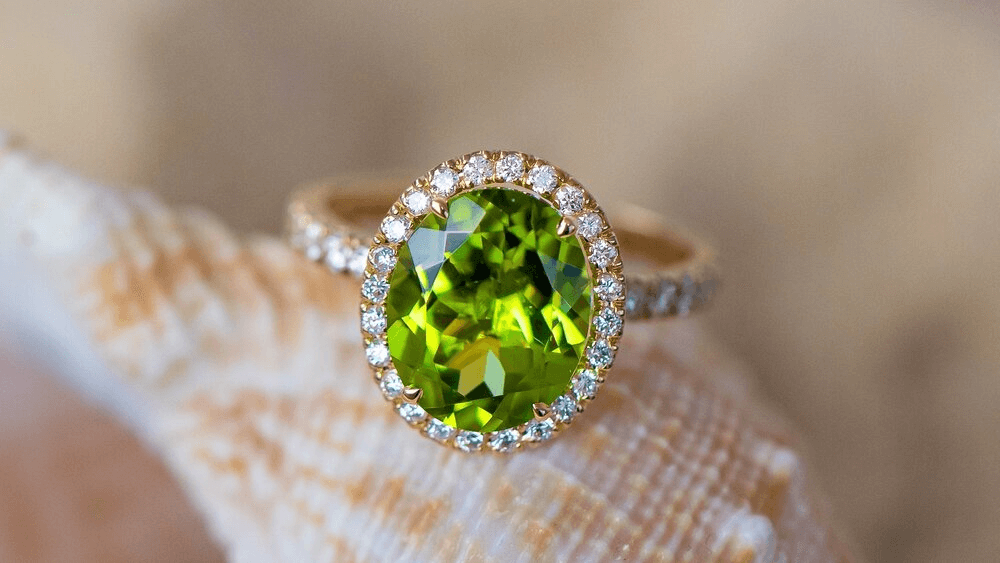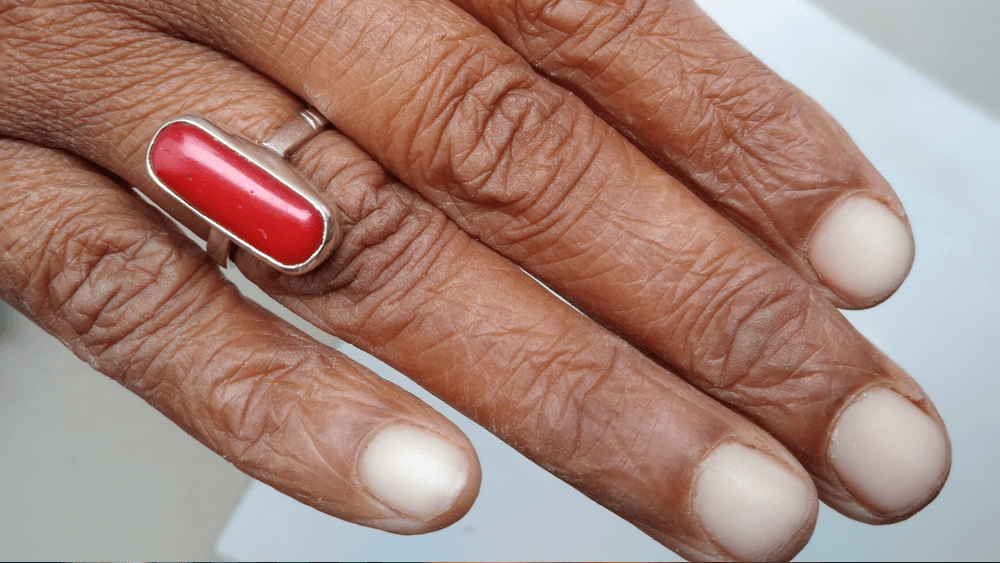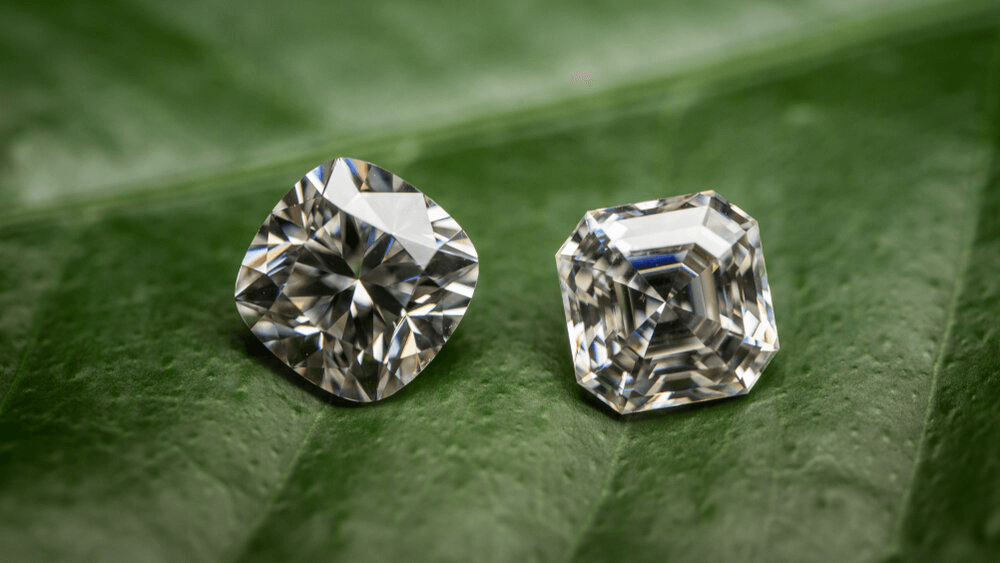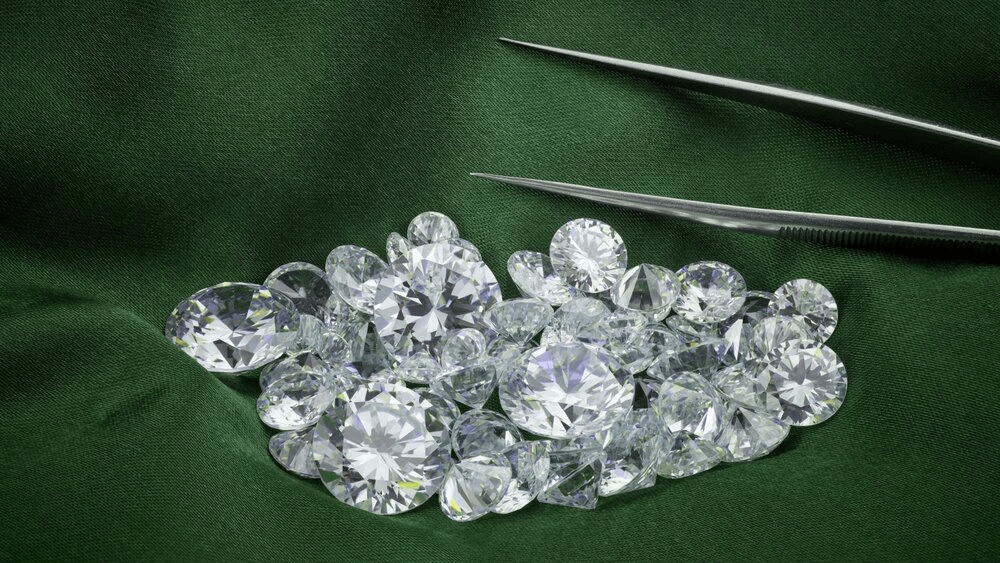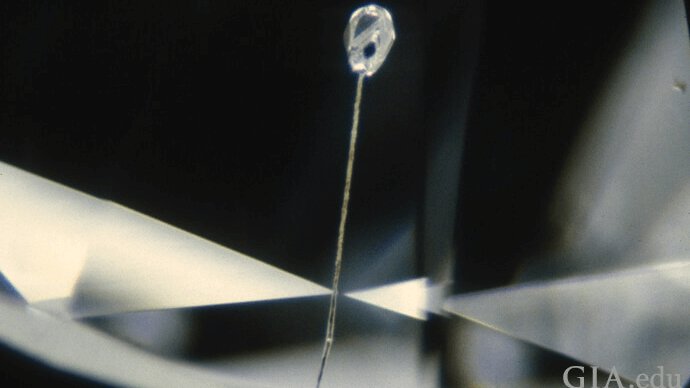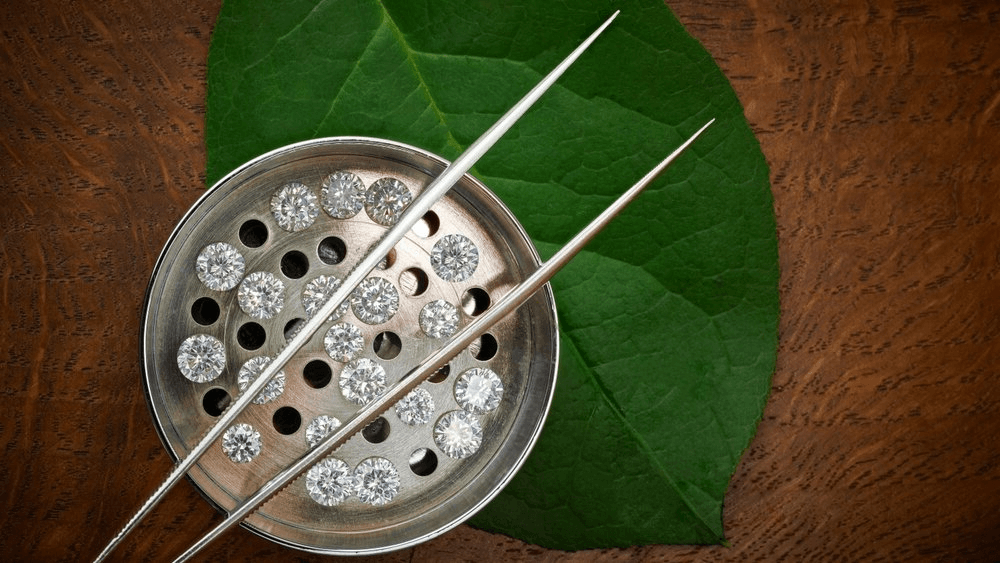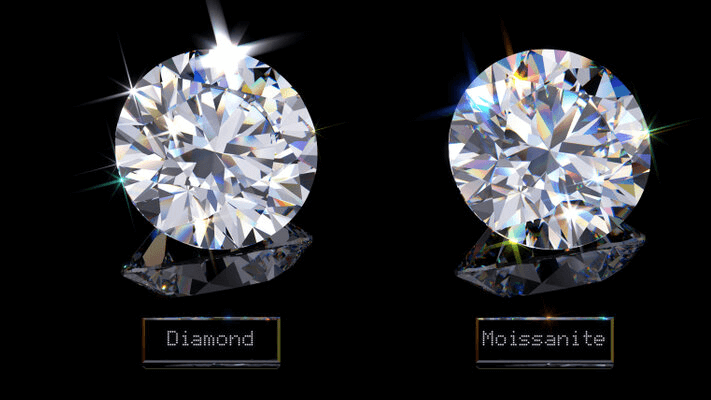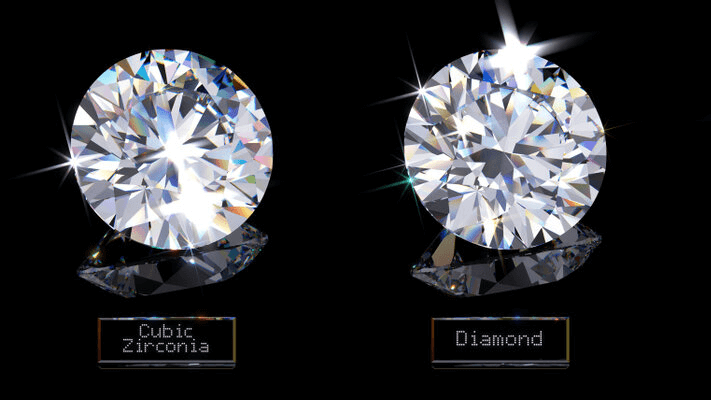Think Twice: The Risks of Enhanced Diamonds

By Gary A.

Edited by Olivia H.
Published Aug 30, 2024
Edited on Mar 31, 2025
Enhanced diamonds aren’t particularly common, since many jewelers and diamond sellers don’t want to offer them to buyers…but why not?

Navigate this guide:
- 7 Quick Tips for Buying an Engagement Ring with an Enhanced Diamond
- Introduction to Enhanced Diamonds
- Understanding Enhanced Diamonds
- The Pros and Cons of Enhanced Diamonds
- Identifying Enhanced Diamonds
- The Impact on Value and Resale
- Choosing the Right Diamond
- Our Expert Take
- 10 Frequently Asked Questions About Enhanced Diamonds
Before we dive deeper into the specifics of Enhanced Diamonds, here are some practical tips to help guide your decision-making process.
7 Quick Tips for Buying an Engagement Ring with an Enhanced Diamond
- Tip 1: Certification is Key
- Always request the diamond’s certification when considering an enhanced diamond. Certificates from reputable labs like the GIA provide essential details about the diamond. However, remember that not all enhanced diamonds, particularly those with non-permanent treatments, receive grading from these labs.
- Tip 2: Disclosure of Enhancement
- Insist on full disclosure of any enhancements or treatments the diamond has undergone. Legally and ethically, this information should be transparent. Enhanced diamonds typically cost less than natural diamonds, reflecting the modifications they’ve undergone.
- Tip 3: Understand the Enhancement
- Be aware of the specific type of enhancement applied to the diamond, such as fracture filling, laser drilling, or HPHT treatments. Each method impacts the diamond’s appearance, durability, and care differently.
- Tip 4: Longevity and Care
- Recognize that certain enhancements may degrade over time. For instance, fracture fillings can deteriorate, altering the diamond’s appearance. Enhanced diamonds often require specific care, like avoiding ultrasonic cleaners or extreme heat. Always inquire about proper care guidelines for your enhanced diamond.
- Tip 5: Resale Value Considerations
- Keep in mind that enhanced diamonds usually have a lower resale value compared to untreated diamonds. If future trade-ins or upgrades are a possibility, consider how the diamond’s enhancement affects its long-term value.
- Tip 6: Natural vs. Lab-Grown vs. Enhanced
- Understand the distinctions among natural, lab-grown, and enhanced diamonds. Natural diamonds are mined, lab-grown are created in controlled settings, and enhanced diamonds are natural diamonds improved aesthetically through treatments. Each category has its own price range and unique advantages and disadvantages.
- Tip 7: Trust Your Eyes and Utilize Tools
- While relying on certifications and disclosures is important, also trust your own judgment. View the diamond under various lighting conditions to gauge its true appearance. Additionally, employ tools like a jeweler’s loupe to detect surface inclusions that could indicate enhancements.
Now that you’ve got these practical tips, use Jeweler AI below to find the perfect engagement ring that suits your style and budget:
Introduction to Enhanced Diamonds
Diamonds have captivated hearts for centuries, celebrated for their unmatched brilliance, beauty, and natural durability. However, not all diamonds possess these qualities without human intervention. Enhanced diamonds—those that have been artificially treated to look better—might seem like a clever shortcut to a stunning stone, but there’s more to the story. While these treatments can temporarily improve a diamond’s appearance, they come at the cost of the diamond’s integrity and long-term value.
While enhanced diamonds may appear more affordable or visually appealing at first glance, they cannot match the authenticity and enduring value of natural, unenhanced diamonds. For those who value true, unaltered beauty, and investment-worthy quality, natural diamonds remain the superior choice.
Understanding Enhanced Diamonds
They’re diamonds…just…better? Not quite, although some might argue they’re superior…
What Are Enhanced Diamonds?
Enhanced diamonds are natural diamonds that have been artificially treated to improve their appearance. These treatments aim to address visible imperfections, such as inclusions or undesirable color, by using techniques like laser drilling, fracture filling, or color enhancement. While these processes can temporarily make a diamond look more appealing, they fundamentally alter the diamond, often compromising its natural integrity.
The reality is that these enhancements are designed to mask flaws rather than correct them, leading to a diamond that may appear perfect but is, in fact, far from it. For discerning buyers, this raises significant concerns about the true investment value and longevity of enhanced diamonds, making them a less desirable option compared to natural, untreated diamonds.
The Process of Enhancement
The enhancement process involves a variety of techniques, each with its own implications. Laser drilling is used to remove internal inclusions by creating tiny channels within the diamond. These channels are often filled with a substance that makes the flaws less visible. Similarly, fracture filling involves injecting a glass-like material into cracks within the diamond to make them less noticeable. Color enhancement may use high-temperature annealing or irradiation to alter the diamond’s hue, giving it a more desirable appearance.
While these methods can temporarily improve a diamond’s look, they do so at the expense of the diamond’s natural state. These treatments are not permanent and can degrade over time, especially under everyday wear and tear. This makes enhanced diamonds less reliable and less valuable over the long term, which is why natural diamonds, untouched by such processes, are the better investment.
The Pros and Cons of Enhanced Diamonds
There are some arguments in favour of a diamond that’s been artificially ‘improved’, but they don’t tend to extend beyond the face-value of the stone…which isn’t the only thing you should consider when buying a diamond…
Benefits of Enhanced Diamonds
While enhanced diamonds might initially seem like an appealing choice due to their lower price and improved appearance, these so-called benefits are often short-lived and can come with significant downsides. The main allure of enhanced diamonds is affordability; however, this lower cost is directly tied to the compromised quality and altered state of the diamond.
For those who prioritize a diamond’s true, unaltered beauty and value, the temporary visual improvements offered by enhancements do not outweigh the risks. Enhanced diamonds may lose their luster over time as the treatments wear off, leading to disappointment and a potential decrease in value.
Drawbacks and Risks
The risks associated with enhanced diamonds far outweigh their initial appeal. One of the biggest drawbacks is the lack of durability; treatments like fracture filling can deteriorate, especially when exposed to heat, chemicals, or regular wear, leaving the diamond looking worse than it originally did. Additionally, the fact that these diamonds have been artificially altered means they often have significantly lower resale value compared to natural diamonds.
There’s also the issue of transparency. Unfortunately, not all sellers are upfront about enhancements, leading buyers to purchase diamonds that aren’t what they seem. This lack of disclosure can result in a purchase that doesn’t hold up over time, both in terms of appearance and value. For these reasons, natural diamonds, untouched by enhancements, are always the safer and more reliable choice.
Identifying Enhanced Diamonds
Enhanced diamonds aren’t always easy to spot, but it’s important to understand those subtle nuances.
Key Characteristics
Identifying enhanced diamonds can be challenging, especially if you’re not aware of what to look for. Enhanced diamonds often have tell-tale inclusions such as tiny laser-drilled channels or a slightly different luster due to fracture filling. These characteristics may not be visible to the naked eye but can be detected with magnification or by a trained gemologist.
However, even with professional tools, the true nature of an enhanced diamond might not always be immediately apparent, which underscores the importance of purchasing only certified, natural diamonds from reputable sources. Natural diamonds do not undergo these alterations, ensuring their beauty and quality remain intact over time.
Importance of Certification
Certification is crucial when it comes to verifying the authenticity of a diamond, especially to ensure it has not been enhanced. Reputable gemological laboratories like the GIA provide detailed reports that indicate whether a diamond has undergone any treatments. These reports are essential for buyers who want to guarantee that their diamond is natural and unaltered.
A certified natural diamond not only holds greater value but also offers peace of mind, knowing that its beauty and structure are completely authentic. Avoiding enhanced diamonds by relying on certification is the best way to ensure you’re investing in a diamond that will retain its value and allure for generations.
The Impact on Value and Resale
Enhanced diamonds aren’t worthless, per se, but they are worth a lot less than untreated diamonds.
Price Comparison
Enhanced diamonds may come with a lower price tag, but this cost-saving is often short-sighted. The initial savings on enhanced diamonds are counterbalanced by the long-term risks and lower resale value. Natural diamonds, while potentially more expensive upfront, maintain their value far better over time, making them a smarter financial investment.
The lower cost of enhanced diamonds is directly linked to their compromised quality. Once the treatments begin to degrade, the diamond’s appearance and value can suffer significantly. Therefore, buyers seeking lasting value and beauty are better served by choosing natural, unenhanced diamonds.
Choosing the Right Diamond
So, are those cost cuts worth it for a beautiful, seemingly flawless diamond?
Natural vs. Enhanced vs. Lab-Grown
When choosing a diamond, understanding the differences between natural, enhanced, and lab-grown diamonds is essential. Natural diamonds, untouched by human intervention, offer a level of authenticity and enduring value that enhanced and lab-grown diamonds simply cannot match. While enhanced diamonds may seem appealing due to their lower cost, their compromised quality and potential for deterioration make them a less reliable choice.
Lab-grown diamonds, while ethically appealing, do not hold the same natural rarity or investment potential as earth-mined diamonds. For those who value authenticity, longevity, and true beauty, natural diamonds remain the best option, offering a timeless piece that can be cherished for generations.
Making an Informed Decision
Making an informed decision when purchasing a diamond involves considering not just the initial cost but also the long-term value and integrity of the stone. Natural diamonds, with their untouched beauty and lasting value, are the best choice for those seeking a reliable and enduring investment. Enhanced diamonds, despite their temporary allure, often fall short in terms of durability and resale value.
It’s crucial to work with a reputable jeweler who can provide clear information and certification for the diamonds you’re considering. By choosing a natural, unenhanced diamond, you’re investing in a piece of history and nature, ensuring that your diamond retains its beauty and value for years to come.
Our Expert Take
Choosing the right diamond is about more than just appearance; it’s about investing in a piece of timeless beauty and enduring value. While enhanced and lab-grown diamonds offer alternatives, natural diamonds remain unparalleled in their authenticity and long-term worth. Don’t fixate on flawlessness – appreciate the natural, unique fingerprint of your diamond and stop trying to erase all that history!
10 Frequently Asked Questions About Enhanced Diamonds
- Q: What exactly are enhanced diamonds?
- A: Enhanced diamonds are natural diamonds that have undergone specific treatments to improve their appearance. These treatments can improve color or clarity but do not change the inherent properties of the diamond.
- Q: How do enhanced diamonds differ from natural diamonds?
- A: Enhanced diamonds start as natural diamonds but are treated to mask imperfections or improve color. While they maintain the basic characteristics of diamonds, these enhancements affect their overall value and sometimes their durability.
- Q: Are enhanced diamonds real diamonds?
- A: Yes, enhanced diamonds are real diamonds. They originate as natural diamonds from the earth and are then treated for aesthetic improvements.
- Q: What are common types of diamond enhancements?
- A: Common enhancements include fracture filling to conceal cracks, laser drilling to remove inclusions, and HPHT (High-Pressure High-Temperature) treatments to improve or change color.
- Q: Can you tell if a diamond is enhanced without professional tools?
- A: It can be challenging to tell if a diamond is enhanced without professional tools. Some signs, like unusually bright colors or lack of natural inclusions, might suggest enhancements, but expert examination is often needed for confirmation.
- Q: Do enhanced diamonds require special care?
- A: Yes, enhanced diamonds often require special care. For example, they may need to be protected from high heat or harsh chemicals that could damage the enhancements.
- Q: How does enhancement affect a diamond’s value?
- A: Enhancement generally lowers a diamond’s value compared to an untreated diamond of similar appearance. This is because the enhancements are considered non-natural improvements.
- Q: Are enhanced diamonds a good choice for engagement rings?
- A: Enhanced diamonds can be a good choice for those on a budget, as they often cost less than natural diamonds of similar appearance. However, it’s important to consider the long-term value and the potential need for special care.
- Q: Can enhancements wear off over time?
- A: Some enhancements, like fracture fillings, can deteriorate over time or with exposure to certain conditions, such as high heat or ultrasonic cleaning.
- Q: How do I ensure I’m making a good purchase with an enhanced diamond?
- A: Always request certification, verify enhancement disclosures, understand the specific enhancements made, and consider the diamond’s care requirements and long-term value. Trust your judgment but also use tools like a jeweler’s loupe for closer examination.
Discover the perfect diamond with Jeweler AI – Your smart path to a dazzling engagement ring. Explore now!
FOLLOW-UP GUIDE SERIES

